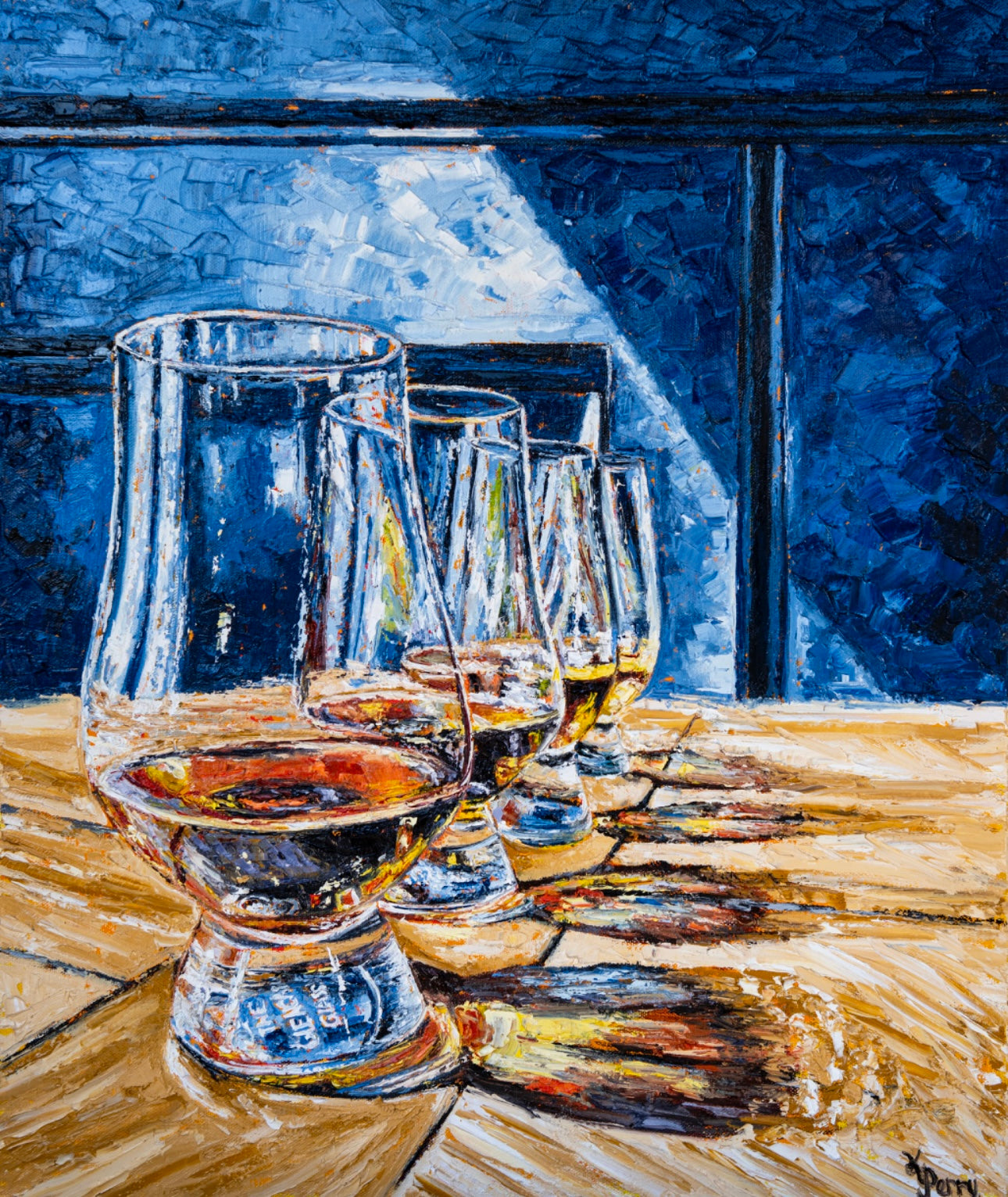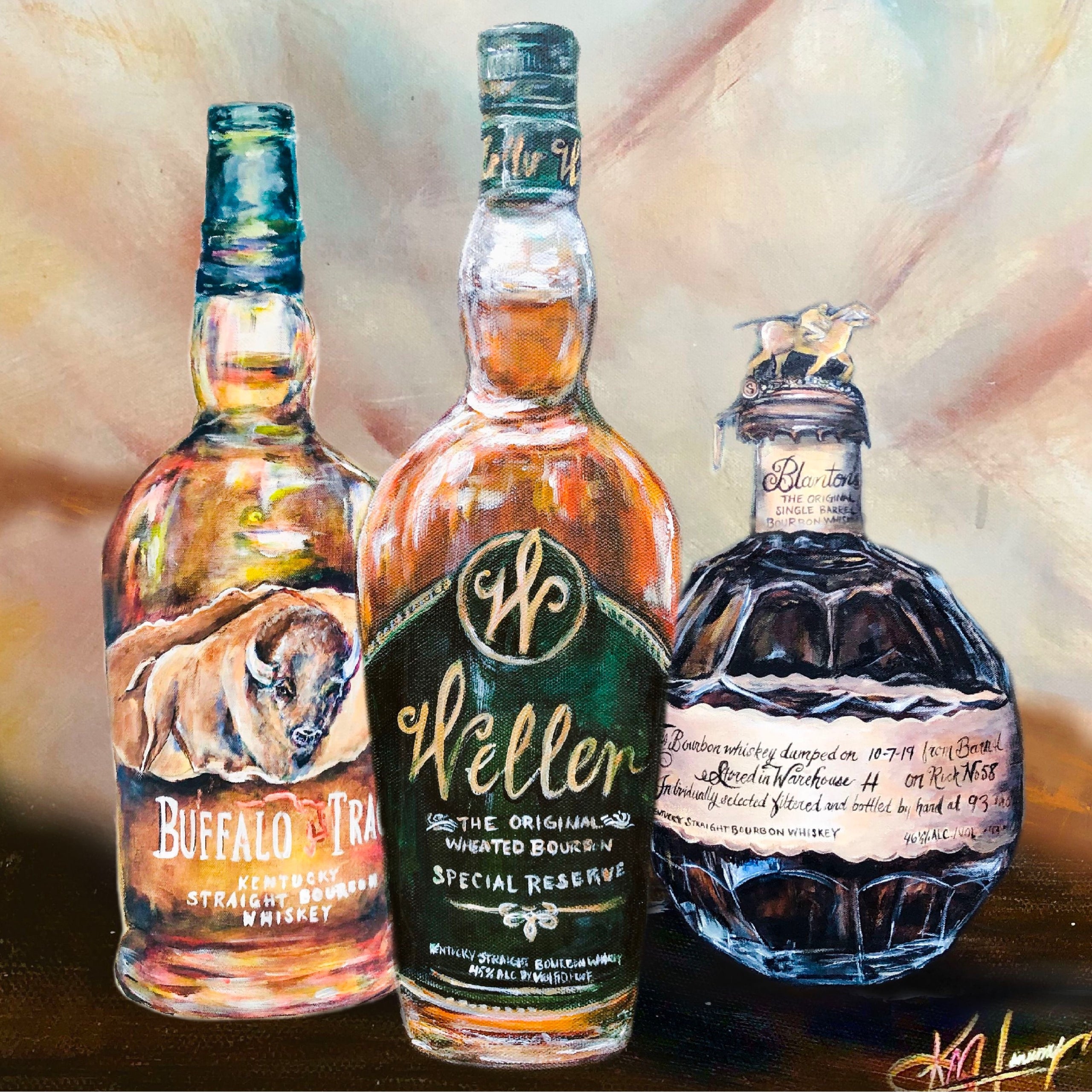Whiskey Art as a Declaration: Exactly How It Improves Home Décor
Whiskey Art as a Declaration: Exactly How It Improves Home Décor
Blog Article
Catching the Essence of Whiskey Art With Distinct Aesthetic Representations and Designs
The art of scotch extends past the liquid itself, manifesting via a range of graphes that encapsulate its fabled heritage and workmanship. From the meticulous layout of labels that share brand name narratives to evocative digital photography that captures the spirit's allure, each creative expression offers to improve the consumer's journey. As the market welcomes contemporary trends, the discussion bordering these depictions comes to be progressively rich and complicated, meaning deeper links in between culture and imagination. What continues to be to be uncovered is just how these evolving designs mirror not only the scotch itself yet also the transforming landscape of artistic interpretation.
The History of Whiskey Art

As bourbon manufacturing spread, so as well did the wish to raise its experience through art. From the elaborate engravings on very early barrels to the elaborate tags of contemporary bottles, each component reflects a special creative vision, acting as a visual narrative of the bourbon's heritage.
In the 19th and 18th centuries, the increase of the industrial transformation further enhanced whiskey art, resulting in cutting-edge product packaging and marketing that caught consumer focus. Artists and developers began try out looks, imbuing whiskey-related images with symbolic meanings that conveyed concepts of custom, craftsmanship, and community.
Today, bourbon art remains to advance, blending traditional techniques with contemporary art kinds. Bourbon Art. This recurring dialogue between the spirit and its graph highlights the enduring bond in between whiskey and culture, improving the general experience for lovers worldwide
Iconic Bottle Layouts
While many factors add to the appeal of scotch, famous bottle designs play an essential role fit consumer assumption and enhancing the overall experience. The aesthetic discussion of whiskey containers is not just an aesthetic factor to consider; it offers as a bridge between the item and the consumer, evoking feelings and establishing expectations.
Distinctive forms, products, and closures can boost a scotch brand name's identification, making it immediately well-known on jampacked racks. The classic Glenfiddich bottle, with its classy tapered silhouette, shares a feeling of practice and workmanship, while the strong, contemporary layout of the Balvenie container shows innovation and class. The usage of colored glass or special appearances can recommend the top quality and character of the bourbon within.
Iconic designs usually include aspects of cultural heritage, signifying the brand name's background and connection to its roots. Brands like Jack Daniel's use a simple, robust style that resonates with its American scotch heritage. Eventually, the influence of bottle layout prolongs beyond plain capability; it encapsulates the significance of the brand, inviting customers to discover and delight in the abundant tapestry of whiskey culture.
Tag Art Work and Branding
Container designs my blog frequently set the stage wherefore customers can expect, but label artwork and branding play a just as substantial role in communicating a whiskey's identity. The label functions as the first point of contact in between the customer and the product, enveloping the significance of the scotch within its visual aspects.
Effective tag art work combines images, shade, and typography to create a story that resonates with the brand's heritage and target audience. A label featuring intricate images and vintage typefaces might evoke a feeling of tradition and workmanship, appealing to lovers. In contrast, strong colors and contemporary layout components could bring in a younger demographic looking for advancement and excitement.


Photography and Visual Storytelling
Recording the significance of whiskey through photography and visual narration is an art kind that boosts the brand name experience. This medium goes beyond mere product representation, diving right into the detailed narratives that hop over to these guys surround each container. By using compelling imagery, professional photographers can stimulate feelings that resonate with customers, inevitably building a much deeper link to the whiskey brand.
Aesthetic narration in bourbon digital photography often utilizes rich structures, lighting, and composition to highlight the unique qualities of the spirit. The interplay of light and shadow can accentuate the brownish-yellow hues of whiskey, while the choice of history components-- such as rustic barrels or classy glass wares-- can strengthen the brand's heritage or way of life associations.
Furthermore, capturing the ritualistic aspects of scotch intake, from the view putting to the tasting, welcomes customers right into a sensory experience, permitting them to visualize the tastes and fragrances that await. Each photograph not just showcases the item however likewise narrates of workmanship, custom, and the moments that whiskey can boost - Limited Edition. Hence, photography comes to be an effective tool in articulating the identification of scotch brands, placing them within the wider social landscape
Arising Fads in Scotch Art
The development of whiskey art is progressively formed by contemporary fads that reflect wider social shifts and consumer choices. This shift not only highlights the relevance of sustainability but likewise boosts the narrative surrounding bourbon production.
Furthermore, electronic art has surged in appeal, enabling ingenious depictions of whiskey. Artists are leveraging innovation to craft immersive experiences, such as augmented truth installations that engage audiences and give a deeper understanding of scotch's social value. This trend likewise prolongs to social media platforms, where visually striking material amasses focus and fosters community among lovers.
Furthermore, collaborations between scotch brand names and musicians are coming to be extra commonplace. These partnerships yield limited-edition packaging designs and exclusive artworks that celebrate both the craftsmanship of whiskey and the creativity of artists. As whiskey art remains to develop, these emerging trends will unquestionably form its future, promoting a dynamic crossway of culture, sustainability, and technology within the whiskey community.
Conclusion
To conclude, the art of bourbon incorporates a varied variety of graphes that reflect its abundant heritage and workmanship. From famous bottle designs and intricate tag art work to compelling photography, each element adds to a wider narrative that enhances the customer's experience. As arising trends, such as electronic art and sustainability, remain to shape this artistic landscape, the complex identification of scotch remains a sustaining resource of cultural link and exploration.

In conclusion, the art of whiskey incorporates a varied selection of aesthetic representations that reflect its abundant heritage and workmanship.
Report this page